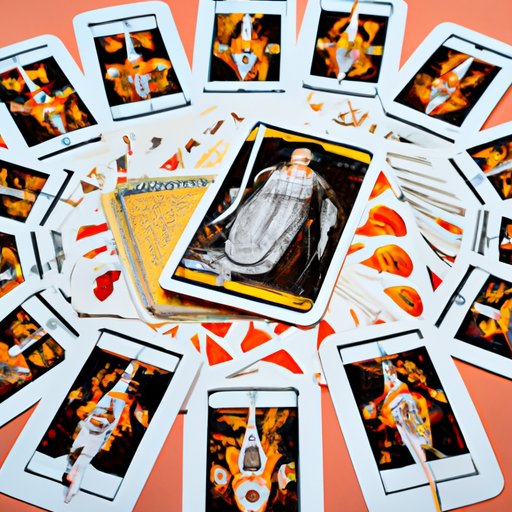
How to Use Tarot Cards for Self-Discovery and Reflection
Have you ever been curious about tarot cards and how they can be used as a tool for self-discovery and reflection? Tarot is a form of divination that dates back centuries and has been used by many as a way to gain insights into various aspects of life. In this article, we will provide an overview of how to get started with tarot, basic tarot knowledge, spreads, and creating a tarot ritual. By the end, we hope you’ll feel empowered and excited to explore the world of tarot for yourself.
Getting Started with Tarot Cards
First things first, to use tarot cards, you need to have a deck. It’s essential to choose a deck that resonates with your intuition and personality. There are hundreds of tarot decks available on the market, so take your time to find one that speaks to you. It’s also helpful to read reviews and look at images online to get a feel for the artwork and style of the deck.
Once you have a deck, it’s important to care for and store it properly. Keep your deck in a cloth or velvet bag to protect it from dust and scratches. Avoid exposing it to direct sunlight or extreme temperatures, which can damage the cards. It’s also a good idea to cleanse and shuffle your deck regularly to keep the energy clear and fresh.
Basic Tarot Knowledge
Before diving into readings, it’s essential to have some basic knowledge of tarot. The tarot deck is divided into two parts: the Major and Minor Arcana. The Major Arcana consists of 22 cards that represent significant life themes, such as the Fool, the Magician, and the World. The Minor Arcana consists of 56 cards divided into four suits: Wands, Cups, Swords, and Pentacles. Each suit represents a different element and aspect of life.
The numbers on the cards also hold meaning. For example, in the Minor Arcana, the Ace represents new beginnings, and the Ten represents completion or fulfillment. The symbolism on the cards varies depending on the deck, but most follow the traditional Rider-Waite-Smith or Thoth system.
Basic Tarot Spreads
Once you have a basic understanding of the cards’ meanings, you can start to experiment with different tarot spreads. A tarot spread is a particular layout of cards used to answer a specific question or gain insights into a particular area of life.
One of the most straightforward spreads is the Three-Card Spread, which consists of three cards placed in a row. The first card represents the past, the second represents the present, and the third represents the future or advice. The Celtic Cross Spread is another popular option that offers a more in-depth look at a situation or question. It consists of ten cards arranged in a cross shape, each representing different aspects of the question or situation.
When interpreting the cards, it’s essential to trust your intuition and use the basic meanings of the cards as a starting point. Each card has various interpretations and can change depending on the context and question. Take your time to reflect on the cards and allow any insights or messages to come through.
Creating a Tarot Ritual
Using tarot cards can be a profound and transformative experience, so it’s essential to create a sacred space or ritual before diving into readings. This can be as simple or elaborate as you like, but the goal is to create a container for the practice.
Some suggestions for creating a routine include setting an intention before the reading, lighting candles or incense, meditating before or after a reading, or journaling your thoughts and insights. The most important thing is to find a ritual that feels aligned with your intentions and supports your practice.
Conclusion
In conclusion, using tarot cards can be a powerful tool for self-discovery and reflection. By choosing a deck that resonates with your intuition, understanding the cards’ basic meanings, experimenting with different spreads, and creating a tarot ritual, you can gain valuable insights and clarity on various areas of life. Remember to trust your intuition and take your time with the process. With practice and patience, you can develop a deep and meaningful relationship with tarot.
Additional resources for learning more about tarot include books such as “The Essential Tarot” by Rosalind Simmons and websites such as Biddy Tarot and Labyrinthos Academy.




